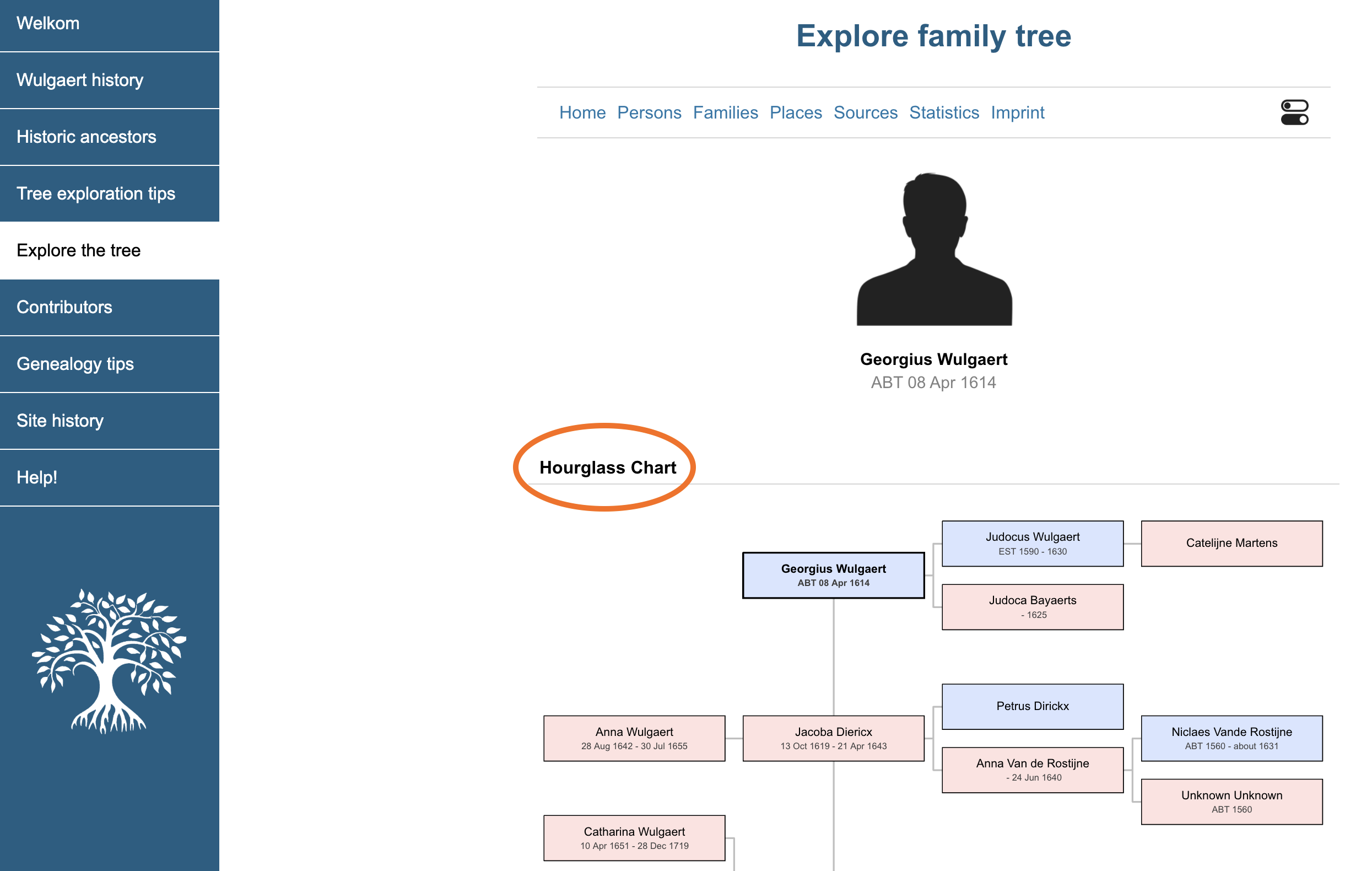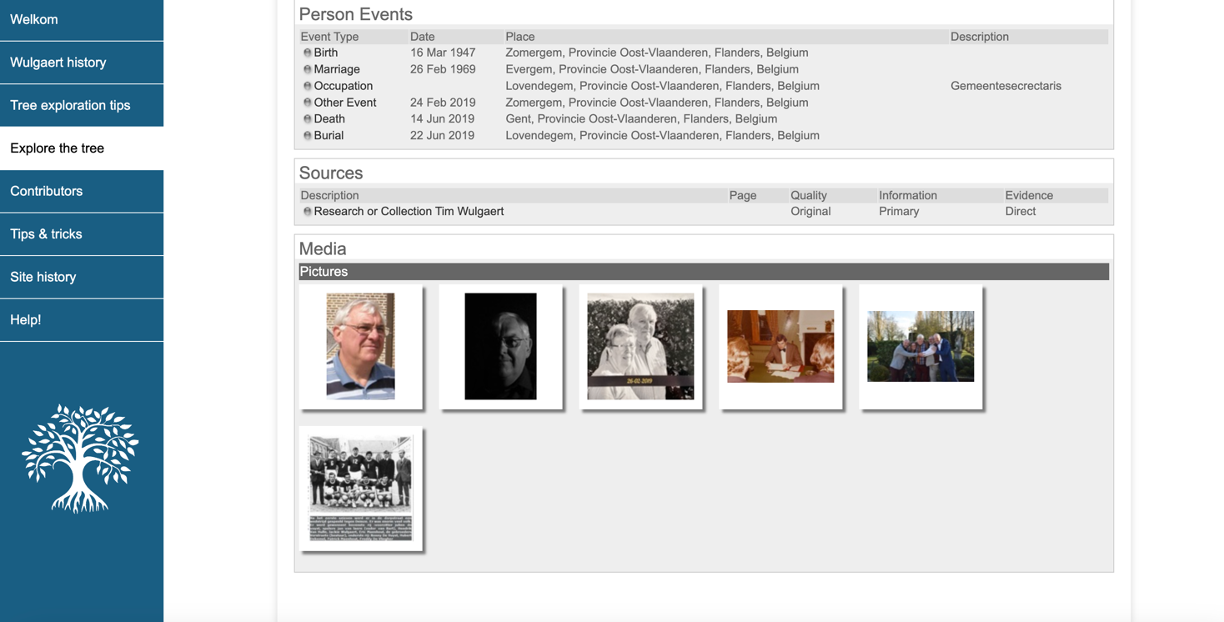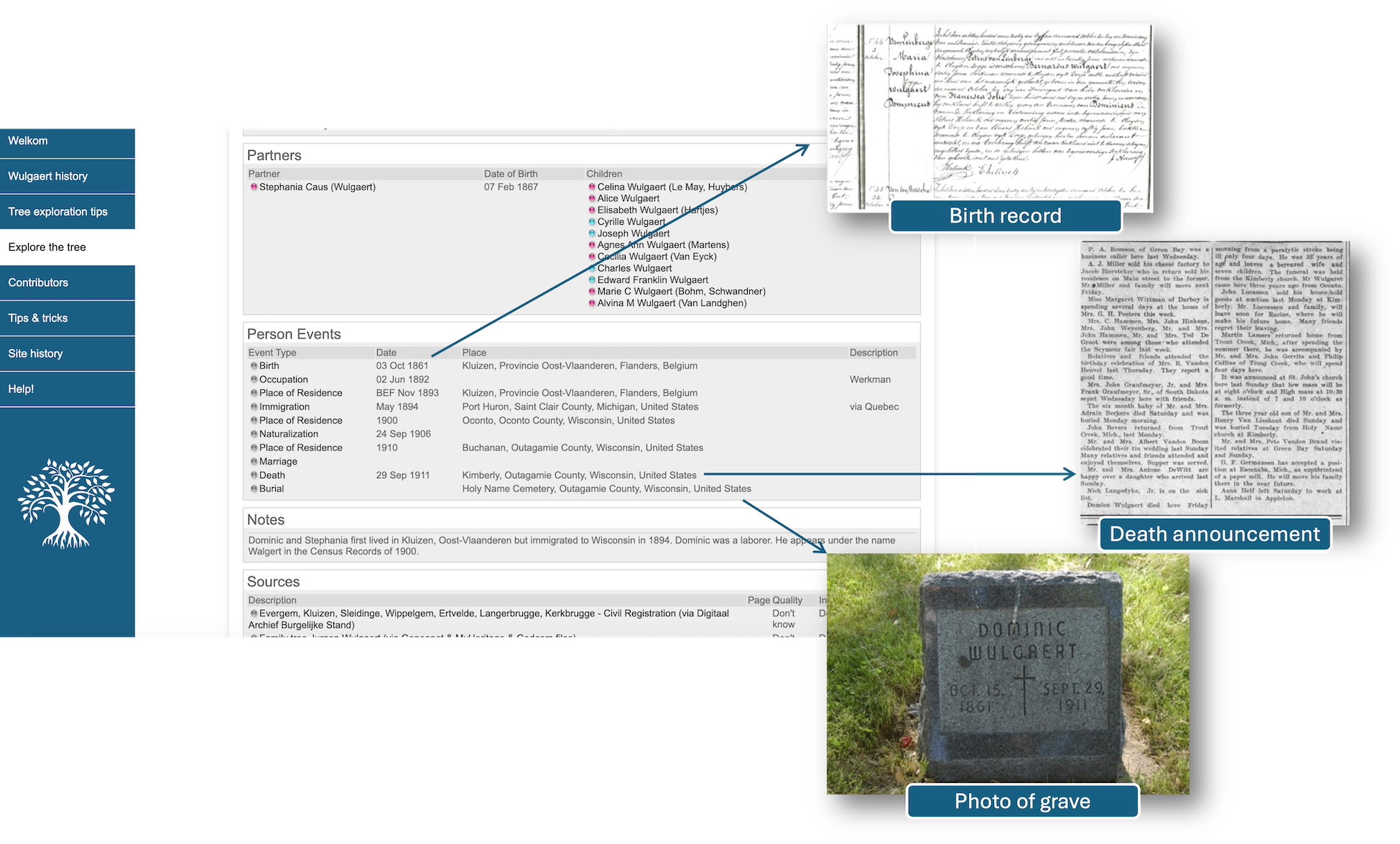How to explore the tree
Below is short overview of how you can browse and explore the the MacFamilyTree generated family tree:
- If you click on Persons or Families in the top menu you will get a page where you can search for people via their name. Similarly, you can click on Places in the top menu which will allow you to find people linked to particular places.

- Each person will also have an hourglass chart. You can navigate up and down the chart by clicking on the box of a person. This will show the person's direct descendants and ancestors. Below the chart you will find more information about the person, e.g. life events, notes, photos, etc., as available (and if not hidden for privacy reasons, see remark below).

- When you scroll down on a person's individual page there will also be a Media section where you will find additional pictures and documents if available (hidden for living persons).

- Be aware that in the overview of a person under the chart you can also select and click on their life-events (e.g. birth, death, etc.). This will open a specific page related to the selected life-event where you are provided with additional information or documentation (where available) such as birth registrations, newspaper articles, memorial cards, marriage invitations, photos, notes, etc.

The research posted online will be regularly updated as research continues. The date of the last upload is mentioned on the primary page.
REMARK: Personal data of living persons are hidden, however can be obtained upon simple request (though all request will be scrutinized and validated to protect privacy).